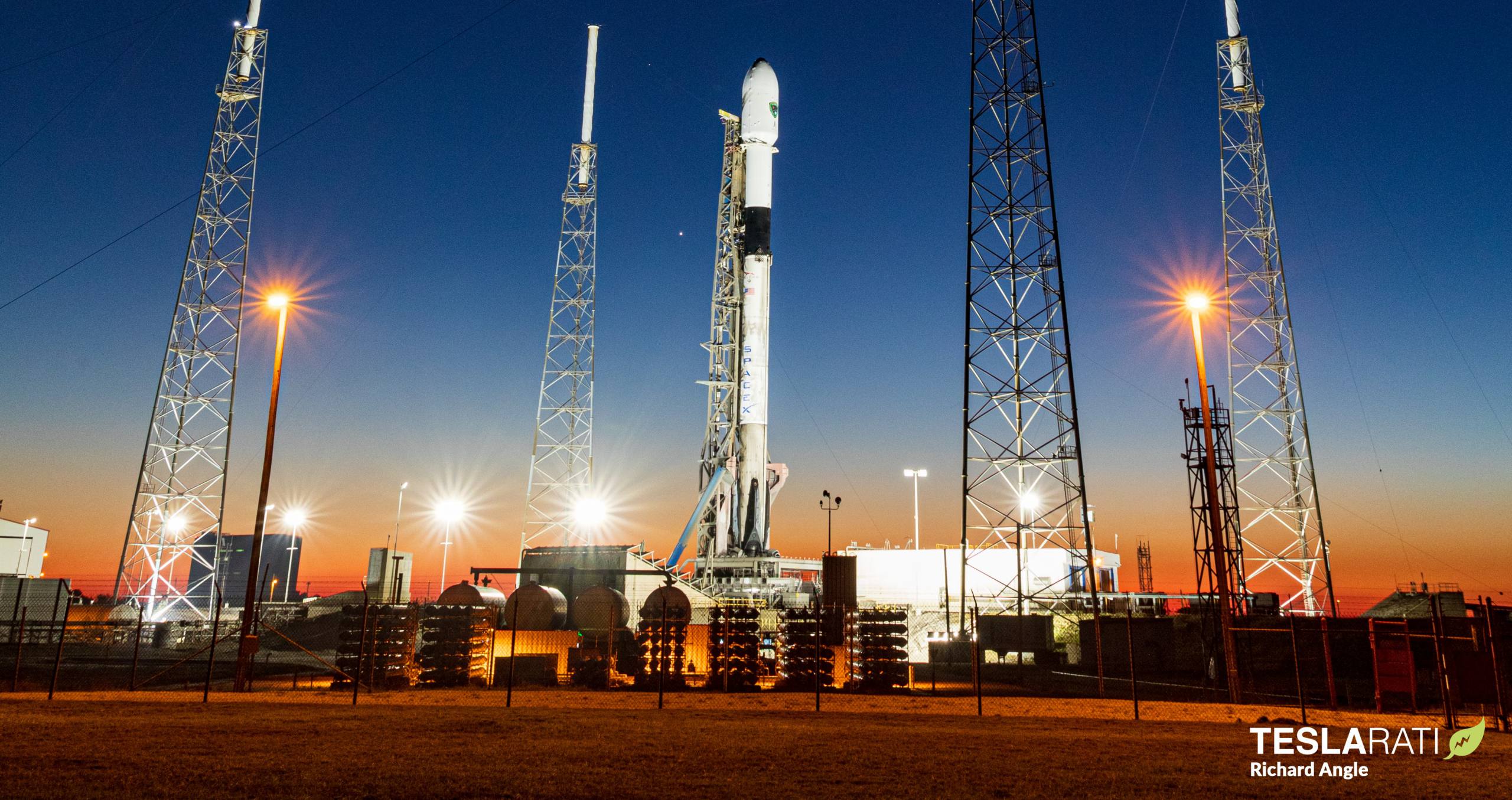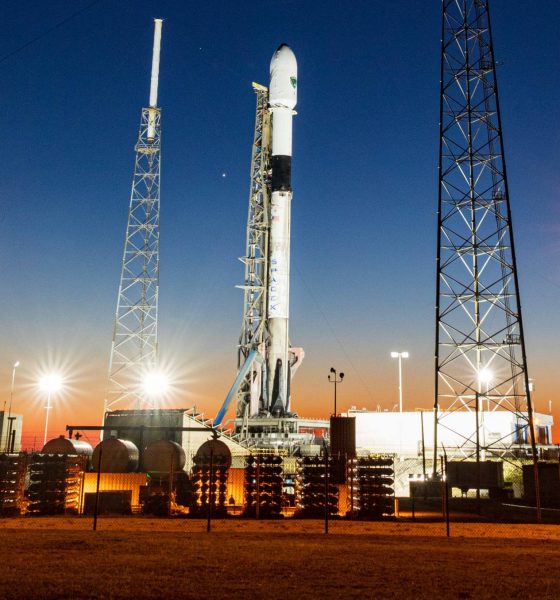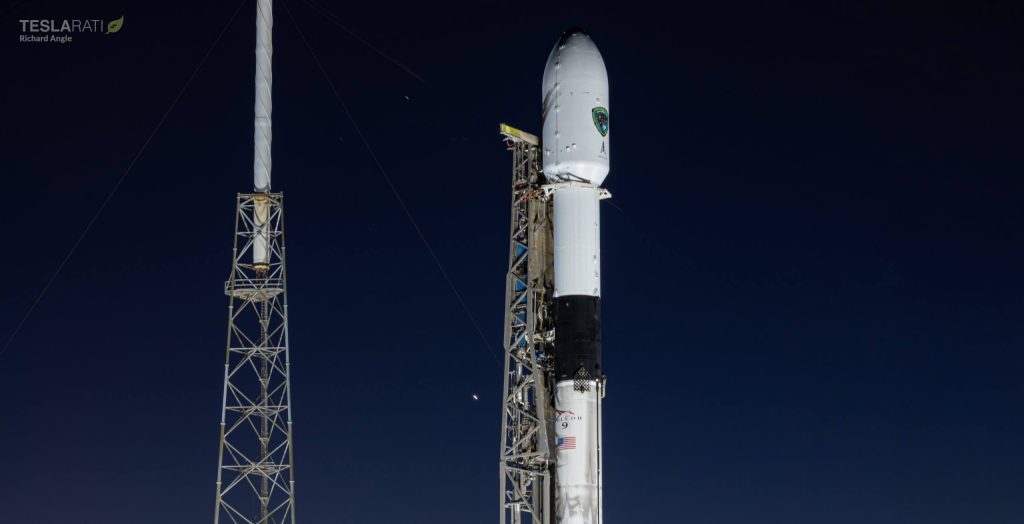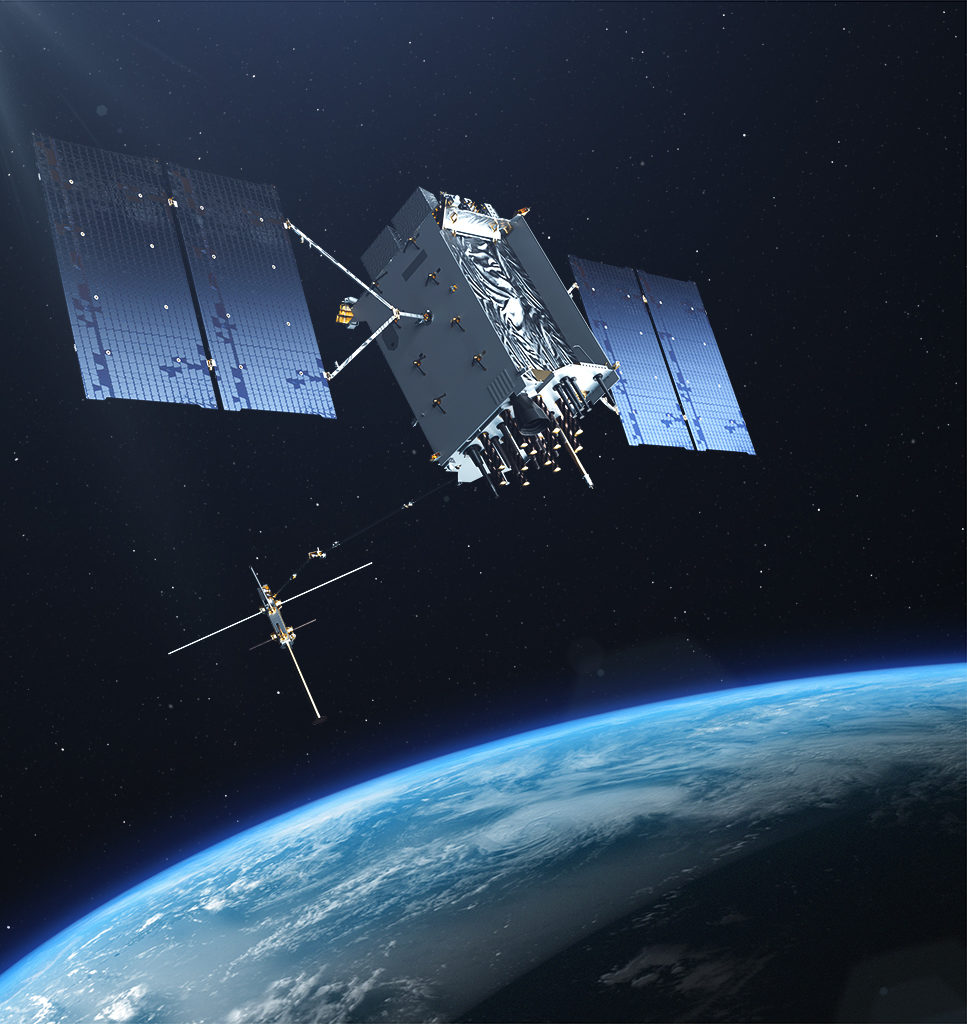

News
SpaceX ships head to sea for fifth upgraded GPS satellite launch [webcast]
Two SpaceX ships have headed to sea to recover parts of Falcon 9 after the rocket’s fifth upgraded GPS III satellite launch for the US military.
On Tuesday, SpaceX confirmed that Falcon 9 is scheduled to launch GPS III Space Vehicle 06 (SV06) no earlier than (NET) 7:10 am EST (12:10 UTC) on Wednesday, January 18th. Built by Lockheed Martin for an average of $610 million each [PDF], the payload is the sixth of ten upgraded GPS III satellites and weighs around 4.35 tons (~9600 lb). Its eventual destination is a circular Medium Earth Orbit (MEO) around 20,200 kilometers (12,550 mi) above Earth’s surface, where it will join dozens of other GPS satellites.
If past trends continue, SpaceX’s two-stage Falcon 9 rocket will be tasked with launching GPS III SV06 to a transfer orbit measuring around 400 kilometers by 20,200 kilometers. The satellite will then use its own propulsion system and propellant to raise its perigee and enter a circular, operational orbit.

The update that's rolling out to the fleet makes full use of the front and rear steering travel to minimize turning circle. In this case a reduction of 1.6 feet just over the air— Wes (@wmorrill3) April 16, 2024
SpaceX will then attempt to recover Falcon 9’s reusable booster on drone ship A Shortfall of Gravitas (ASOG), which will be stationed about 640 kilometers (~400 mi) northeast of the company’s Cape Canaveral Space Force Station LC-40 launch pad. ASOG was towed to sea on Friday, January 13th. Used once before to launch four astronauts on SpaceX’s Crew-5 mission, Falcon 9 B1077 will reportedly launch GPS III SV06, becoming the second flight-proven rocket to launch a GPS III satellite.
770 kilometers (~460 mi) downrange, recovery ship Doug – which left port on January 15th – will try to fish Falcon 9’s GPS III SV06 payload fairing halves out of the ocean for reuse. Fairing recovery and reuse have quietly become almost as reliable and routine as Falcon booster recovery. SpaceX is still the only company or group to successfully reuse an orbital-class rocket’s fairing.
GPS III SV06 will be SpaceX’s fifth upgraded GPS satellite launch since December 2018. The mission is part of a block of four contracts that represent a minor revolution in US military launch procurement. During SpaceX’s first GPS III launch, the company was forced to expend an entire Falcon 9 rocket – likely out of an abundance of caution and at the request of the US Air Force. For its three subsequent GPS III launches, SpaceX was able to recover each Falcon 9 booster while still launching the payload to the same orbit as the first expendable mission.

Soon after that first success, SpaceX won a contract worth $290.5 million for three more GPS III launches. At some point, the US military reassessed the situation and decided that SpaceX’s reusable Falcon boosters were becoming reliable enough to safely launch military payloads. The Space Force ultimately renegotiated its contract with SpaceX to allow the company to launch GPS III SV05 and SV06 on reused Falcon 9 boosters, reducing the total cost to the taxpayer to $226.5 million.
After GPS III SV06, the Space Force only has one GPS III launch contract left – using a ULA Vulcan rocket that has yet to fly. The three remaining GPS III satellites still need launch contracts, and the first tranche of ten GPS III satellites will be followed by up to 22 GPS IIIF Follow On satellites that will also need launches. Given the company’s track record and lower prices, SpaceX will likely be tasked with launching a large portion of those future satellites throughout the 2020s and into the 2030s.
Tune in below around 6:55 am EST (11:55 UTC) to watch SpaceX’s fifth GPS III launch live.

News
Man credits Grok AI with saving his life after ER missed near-ruptured appendix
The AI flagged some of the man’s symptoms and urged him to return to the ER immediately and demand a CT scan.

A 49-year-old man has stated that xAI’s Grok ended up saving his life when the large language model identified a near-ruptured appendix that his first ER visit dismissed as acid reflux.
After being sent home from the ER, the man asked Grok to analyze his symptoms. The AI flagged some of the man’s symptoms and urged him to return immediately and demand a CT scan. The scan confirmed that something far worse than acid reflux was indeed going on.
Grok spotted what a doctor missed
In a post on Reddit, u/Tykjen noted that for 24 hours straight, he had a constant “razor-blade-level” abdominal pain that forced him into a fetal position. He had no fever or visible signs. He went to the ER, where a doctor pressed his soft belly, prescribed acid blockers, and sent him home.
The acid blockers didn’t work, and the man’s pain remained intense. He then decided to open a year-long chat he had with Grok and listed every detail that he was experiencing. The AI responded quickly. “Grok immediately flagged perforated ulcer or atypical appendicitis, told me the exact red-flag pattern I was describing, and basically said “go back right now and ask for a CT,” the man wrote in his post.
He copied Grok’s reasoning, returned to the ER, and insisted on the scan. The CT scan ultimately showed an inflamed appendix on the verge of rupture. Six hours later, the appendix was out. The man said the pain has completely vanished, and he woke up laughing under anesthesia. He was discharged the next day.
How a late-night conversation with Grok got me to demand the CT scan that saved my life from a ruptured appendix (December 2025)
byu/Tykjen ingrok
AI doctors could very well be welcomed
In the replies to his Reddit post, u/Tykjen further explained that he specifically avoided telling doctors that Grok, an AI, suggested he get a CT scan. “I did not tell them on the second visit that Grok recommended the CT scan. I had to lie. I told them my sister who’s a nurse told me to ask for the scan,” the man wrote.
One commenter noted that the use of AI in medicine will likely be welcomed, stating that “If AI could take doctors’ jobs one day, I will be happy. Doctors just don’t care anymore. It’s all a paycheck.” The Redditor replied with, “Sadly yes. That is what it felt like after the first visit. And the following night could have been my last.”
Elon Musk has been very optimistic about the potential of robots like Tesla Optimus in the medical field. Provided that they are able to achieve human-level articulation in their hands, and Tesla is able to bring down their cost through mass manufacturing, the era of AI-powered medical care could very well be closer than expected.
News
Tesla expands Model 3 lineup in Europe with most affordable variant yet
The Model 3 Standard still delivers more than 300 miles of range, potentially making it an attractive option for budget-conscious buyers.

Tesla has introduced a lower-priced Model 3 variant in Europe, expanding the lineup just two months after the vehicle’s U.S. debut. The Model 3 Standard still delivers more than 300 miles (480 km) of range, potentially making it an attractive option for budget-conscious buyers.
Tesla’s pricing strategy
The Model 3 Standard arrives as Tesla contends with declining registrations in several countries across Europe, where sales have not fully offset shifting consumer preferences. Many buyers have turned to options such as Volkswagen’s ID.3 and BYD’s Atto 3, both of which have benefited from aggressive pricing.
By removing select premium finishes and features, Tesla positioned the new Model 3 Standard as an “ultra-low cost of ownership” option of its all-electric sedan. Pricing comes in at €37,970 in Germany, NOK 330,056 in Norway, and SEK 449,990 in Sweden, depending on market. This places the Model 3 Standard well below the “premium” Model 3 trim, which starts at €45,970 in Germany.
Deliveries for the Standard model are expected to begin in the first quarter of 2026, giving Tesla an entry-level foothold in a segment that’s increasingly defined by sub-€40,000 offerings.
Tesla’s affordable vehicle push
The low-cost Model 3 follows October’s launch of a similarly positioned Model Y variant, signaling a broader shift in Tesla’s product strategy. While CEO Elon Musk has moved the company toward AI-driven initiatives such as robotaxis and humanoid robots, lower-priced vehicles remain necessary to support the company’s revenue in the near term.
Reports have indicated that Tesla previously abandoned plans for an all-new $25,000 EV, with the company opting to create cheaper versions of existing platforms instead. Analysts have flagged possible cannibalization of higher-margin models, but the move aims to counter an influx of aggressively priced entrants from China and Europe, many of which sell below $30,000. With the new Model 3 Standard, Tesla is reinforcing its volume strategy in Europe’s increasingly competitive EV landscape.
News
Tesla FSD (Supervised) stuns Germany’s biggest car magazine
FSD Supervised recognized construction zones, braked early for pedestrians, and yielded politely on narrow streets.

Tesla’s upcoming FSD Supervised system, set for a European debut pending regulatory approval, is showing notably refined behavior in real-world testing, including construction zones, pedestrian detection, and lane changes, as per a recent demonstration ride in Berlin.
While the system still required driver oversight, its smooth braking, steering, and decision-making illustrated how far Tesla’s driver-assistance technology has advanced ahead of a potential 2026 rollout.
FSD’s maturity in dense city driving
During the Berlin test ride with Auto Bild, Germany’s largest automotive publication, a Tesla Model 3 running FSD handled complex traffic with minimal intervention, autonomously managing braking, acceleration, steering, and overtaking up to 140 km/h. It recognized construction zones, braked early for pedestrians, and yielded politely on narrow streets.
Only one manual override was required when the system misread a converted one-way route, an example, Tesla stated, of the continuous learning baked into its vision-based architecture.
Robin Hornig of Auto Bild summed up his experience with FSD Supervised with a glowing review of the system. As per the reporter, FSD Supervised already exceeds humans with its all-around vision. “Tesla FSD Supervised sees more than I do. It doesn’t get distracted and never gets tired. I like to think I’m a good driver, but I can’t match this system’s all-around vision. It’s at its best when both work together: my experience and the Tesla’s constant attention,” the journalist wrote.
Tesla FSD in Europe
FSD Supervised is still a driver-assistance system rather than autonomous driving. Still, Auto Bild noted that Tesla’s 360-degree camera suite, constant monitoring, and high computing power mark a sizable leap from earlier iterations. Already active in the U.S., China, and several other regions, the system is currently navigating Europe’s approval pipeline. Tesla has applied for an exemption in the Netherlands, aiming to launch the feature through a free software update as early as February 2026.
What Tesla demonstrated in Berlin mirrors capabilities already common in China and the U.S., where rival automakers have rolled out hands-free or city-navigation systems. Europe, however, remains behind due to a stricter certification environment, though Tesla is currently hard at work pushing for FSD Supervised’s approval in several countries in the region.








